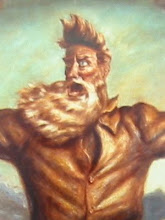A friend of mine teaches this class and invited me to shoot it. 346 photos in 2.5 hours, you know what I will be doing with my spare time over the next few days - editing photos.
For the uninitiated, the evolution consists of the propane prop, which simulates an ignited propane leak. The objective is to control, not extinguish the flames, so that a control valve can be accessed and the propane supply shut off. Teamwork and coordination are the keys here, as the hose streams must be manipulated precisely and uniformly. If the back-up guy moves wrong, the nozzle moves wrong, causing a break in the water wall. Ignited propane could then work in, injuring the firefighters.
I last went through this evolution during a Fire Control 4 class, held in El Centro Calif. back in 1982. It was a blast. I must say that I REALLY enjoyed shooting this, it brought back a lot of memories.
I must also add that this is a part-time academy. Most of these cadets have full-time jobs and go to the academy on week-ends and one night a week. Many have families and a few run businesses. None have any guarantee of employment as a firefighter. Look up the word motivated in the dictionary, you should see pictures of the people in the above photos.
Many thanks to the instructors and students of the academy for letting me shoot. It can be a pain in the ass having a dork with a camera wandering about, even if he does wear a red helmet.
Thanks for reading,
Schmoe




I love these photos, Captain Schmoe. Thanks.
ReplyDeleteDo you extinguish the flames by cutting off the fuel in order to avoid creating an explosive atmosphere? Kind of like: Fire bad, but explosive atmosphere worse?
What happens if you can't cut off the source of fuel? Can that happen? Does it?
Wayne - You are correct Wayne, the presence of unburned fuel presents a risk of re-ignition - especially when the fuel is heavier than air.
ReplyDeleteThe fuel supply should be shut off first, then the flammable gas fire will go out. The collateral fires can then be put out with water.
Glad you enjoy the pics, thanks for the comment.